Shot on 16mm by DP Robbie Ryan ISC BSC, director Andrea Arnold's acclaimed 'Bird' glides between social and magic realism
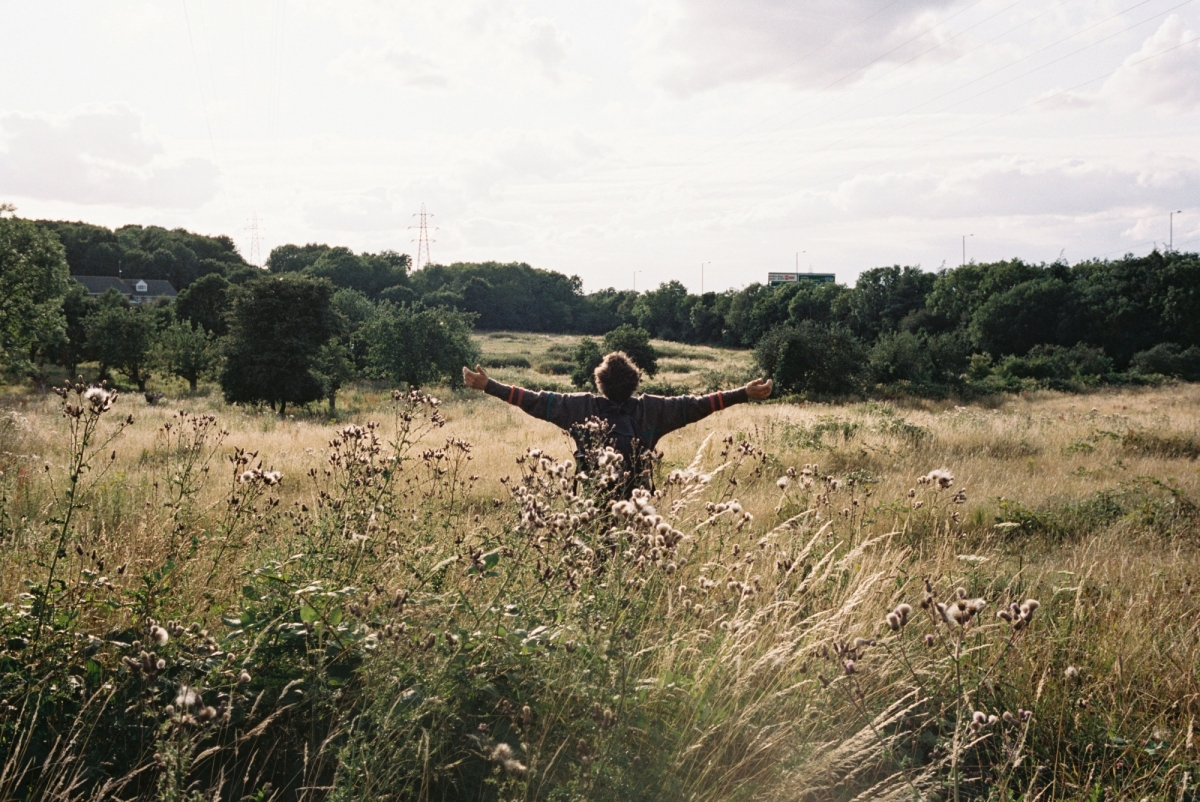
BIRD, directed by Andrea Arnold. Photo Atsushi Nishijima. © 2024 House Bird Ltd, Ad Vitam, BBC & BFI.
Shot on KODAK 16mm film by DP Robbie Ryan ISC BSC, director Andrea Arnold's acclaimed feature Bird is a coming-of age-story where social and magical realism meet, as its narrative marries grim reality with flights of fantasy.
The film follows Bailey, a 12-year-old seeking attention and meaning in her life. She lives largely ignored in a dilapidated squat with her roguish father Bug, soon to get hitched to a woman he met just a few weeks before, plus her half-brother, Hunter, who is mixed-up in a teenage vigilante gang, and her much younger half-siblings. Bailey's mother resides in similarly low-rent surroundings across town under the torment of a malevolent, lay-about boyfriend. When the mysterious Bird enters her life, in search of his long-lost family, events take an equally mysterious turn.
Starring Nykiya Adams, alongside Barry Keoghan and Franz Rogowski, Bird had its world premiere at the 2024 Cannes Film Festival and was BAFTA-nominated for Best British Film. It received acclaim for its deeply affecting story and Ryan's work in making it an exhilarating 'tour-de-force' visually.
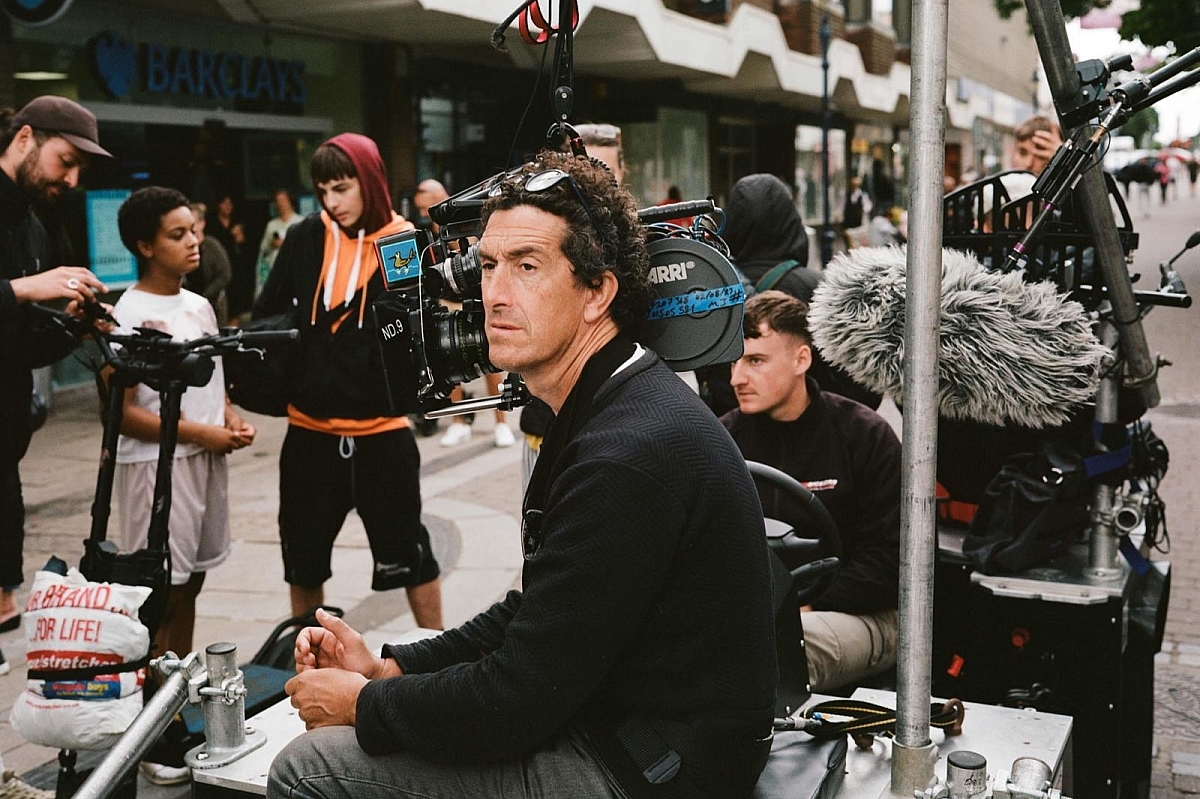
Behind-the-scenes photo by Jima.
Bird represents Ryan's sixth collaboration with Arnold, starting with the 16mm short Wasp (2003), before going on to include her 35mm film-originated features Fish Tank (2009), Wuthering Heights (2011) and American Honey (2016). The DP has an impressive and consistent track record of shooting on film with credits encompassing Ken Loach's I, Daniel Blake (2016) and Billy O'Brien's I Am Not a Serial Killer (2016), both captured on 16mm film. Ryan was Oscar-nominated for his work on the Yorgos Lanthimos' The Favourite (2019) and Poor Things (2023), which both harnessed 35mm.
"I love working with Andrea, as it always comes with a level of creative chaos, and there was quite a lot of chaos on this production because of the nature of the story we were shooting," says Ryan. "But working with her is always comfortable, as she's a great friend. We have a good shorthand on the visual side of things, and her productions always feel like a family effort – all of which make my work a lot easier."
Recalling his initial reaction to Arnold's script, Ryan remarks, "Andrea is a brilliant writer. Her sense of place, her characters and the way they speak, are all so natural. This film was grounded in Bailey's reality, but there was something otherworldly going on in it too -- a kind of parallel world that only Bailey can see. I liked how amongst the harsh backdrop of the urban scenes, that the story also had a lot of nature in it. Every time we do a film together, some of it is like documentary. We're always filming some kind of insect, animal or bird."
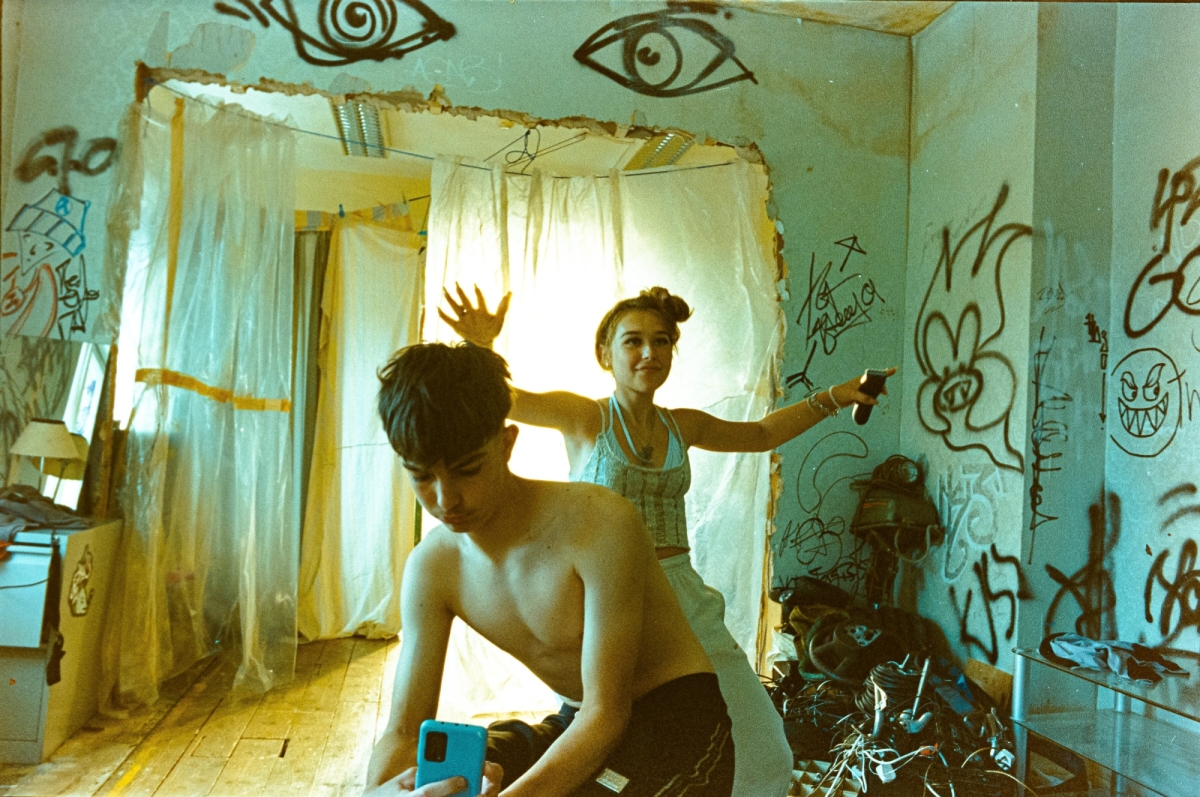
BIRD, directed by Andrea Arnold. © 2024 House Bird Ltd, Ad Vitam, BBC & BFI.
Ryan recounts that visual references for the film were minimal. "We've found our own language from the films we've done together before. Generally, we prefer to land at each location and figure things out from there. Andrea is a big fan of shooting handheld and using natural light, as I am too. They are both free and easy ways to bring a bit of life to a film."
Filming took place over a six-week period in June and July 2023 around the towns of Gravesend and Dartford, plus Isle of Sheppey on the south bank of the River Thames in northwest Kent, UK.
"I suggested to Andrea that she revisit 16mm, which we had used for our first film together, Wasp, as it would be naturally-attuned to the environments of our locations and would ultimately suit the universe she wanted to create in this film.
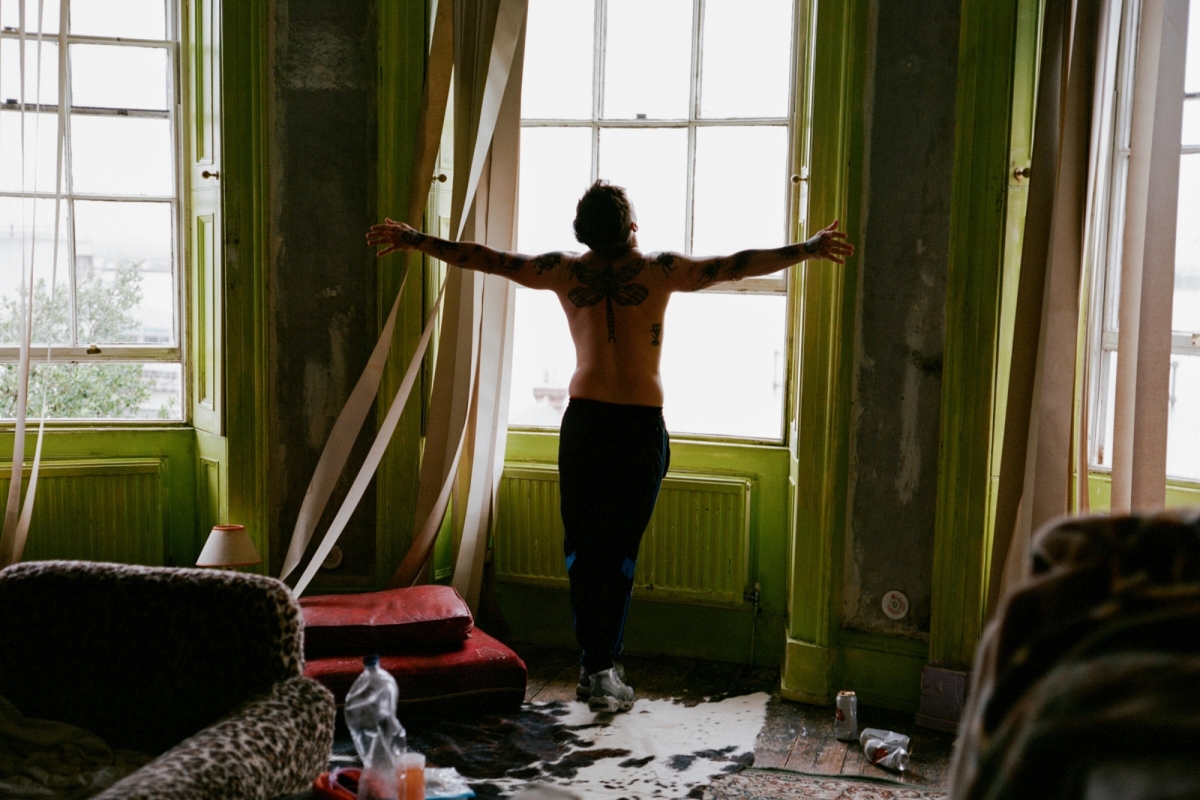
BIRD, directed by Andrea Arnold. Photo Atsushi Nishijima. © 2024 House Bird Ltd, Ad Vitam, BBC & BFI.
"During prep, I shot and graded various 16mm and digital tests, to see what she responded to best. She was really drawn to 16mm because of its inherent, organic beauty, which I'm a big fan of. I was really glad when she chose it because I knew 16mm film would look the most interesting. She also really liked the full open-gate, where you can see the rough edges of the frame, plus things like fluff and hairs that might appear in the image."
For the shoot, Ryan went with an ARRIFLEX 416 16mm camera, plus Ultra 16 lenses and Canon 10-180mm zoom, rented from Panavision in London. He also took along his own Bolex 16mm camera to shoot some of the electric-scooter-based sequences.
His 16mm film stocks of choice were what he calls "the usual suspects," namely KODAK VISION3 250D Color Negative Film 7207 for day interiors and most exteriors, KODAK VISION3 500T Color Negative Film 7219 for dark/night scenes, with KODAK VISION3 50D Color Negative Film 7203 for brighter day exteriors. Film processing was done at Kodak Film Lab London, based on the lot at Pinewood Studios.
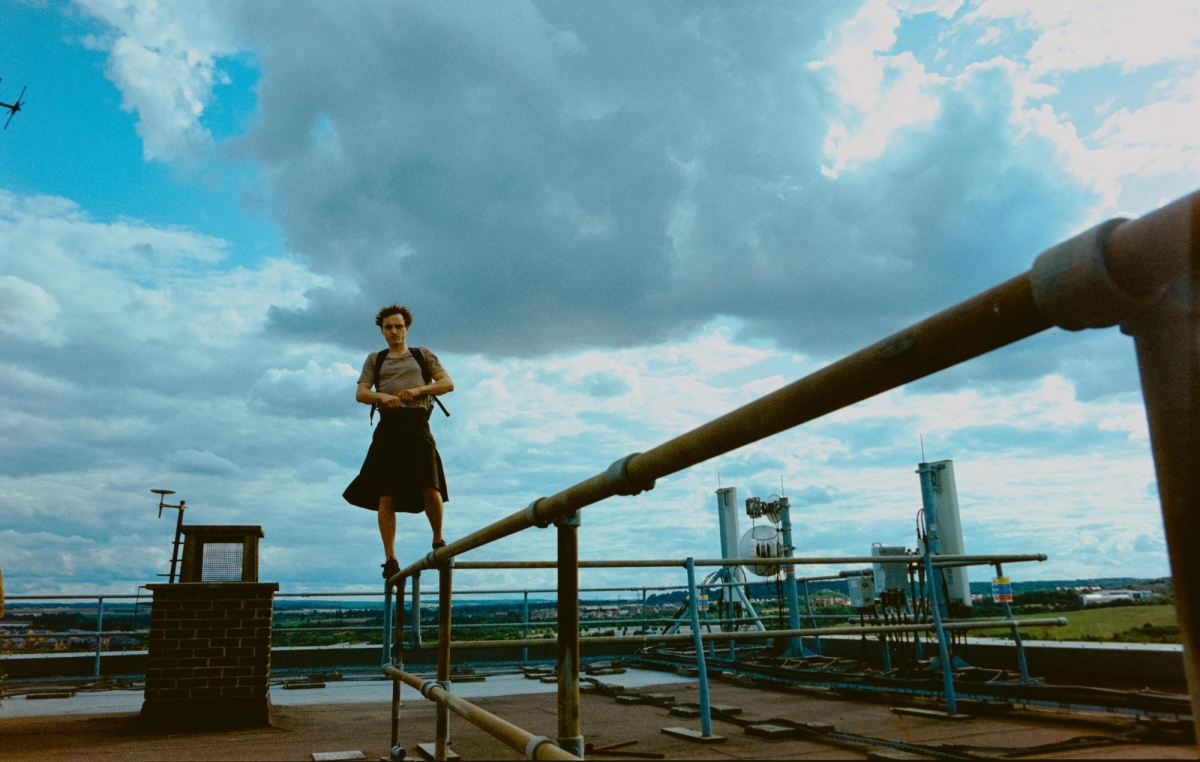
BIRD, directed by Andrea Arnold. © 2024 House Bird Ltd, Ad Vitam, BBC & BFI.
"I shot most of the film using the 250D as I knew it could handle the majority of our scenarios," Ryan says. "I was aware that 16mm 500T can sometimes look a little bit grainy, but it actually turned out okay because we had good summer weather, and our locations had adequate natural light. The 50D is a cleaner stock grain-wise, which absorbs color really well, and it was great on the very sunny days we filmed."
He adds, "Filming on 16mm – it's so simple. There no DIT, no cables and monitors. You just have a loader, a magazine and you shoot. It genuinely it feels that you've got a lot more freedom to be spontaneous."
Arnold's predilection for handheld cinematography is intrinsic to her filmmaking style. This meant Ryan having to prove sensitive towards the more tender and emotional story beats, often shooting over the shoulder of the main character.
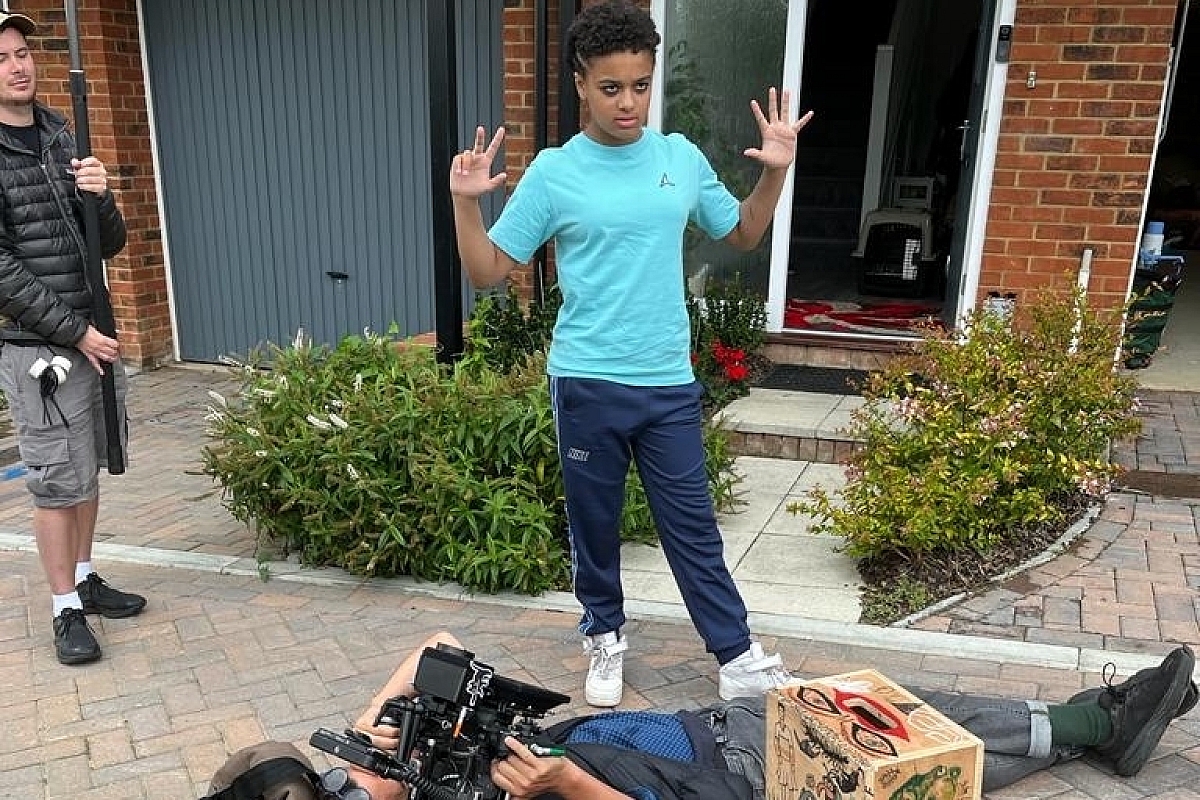
Behind-the-scenes photo by Jima.
"This form of handheld is simple but effective, as you are with the character, and see what they see. You don't fuss it up with other angles and, in that way, it begins to get under your skin."
However, the DP also had to be fleet-of-foot, often running along a street or dexterously clambering up-and-down winding staircases in hot-pursuit of Bailey with the camera.
"Handheld can be physically challenging, and I was worried that I wasn't going to be able to keep up with Nykiya," he admits. "So, I actually bought new trainers for the shoot. As time has gone by, I have definitely gotten a little more out of puff, but I was determined to hang in-there.
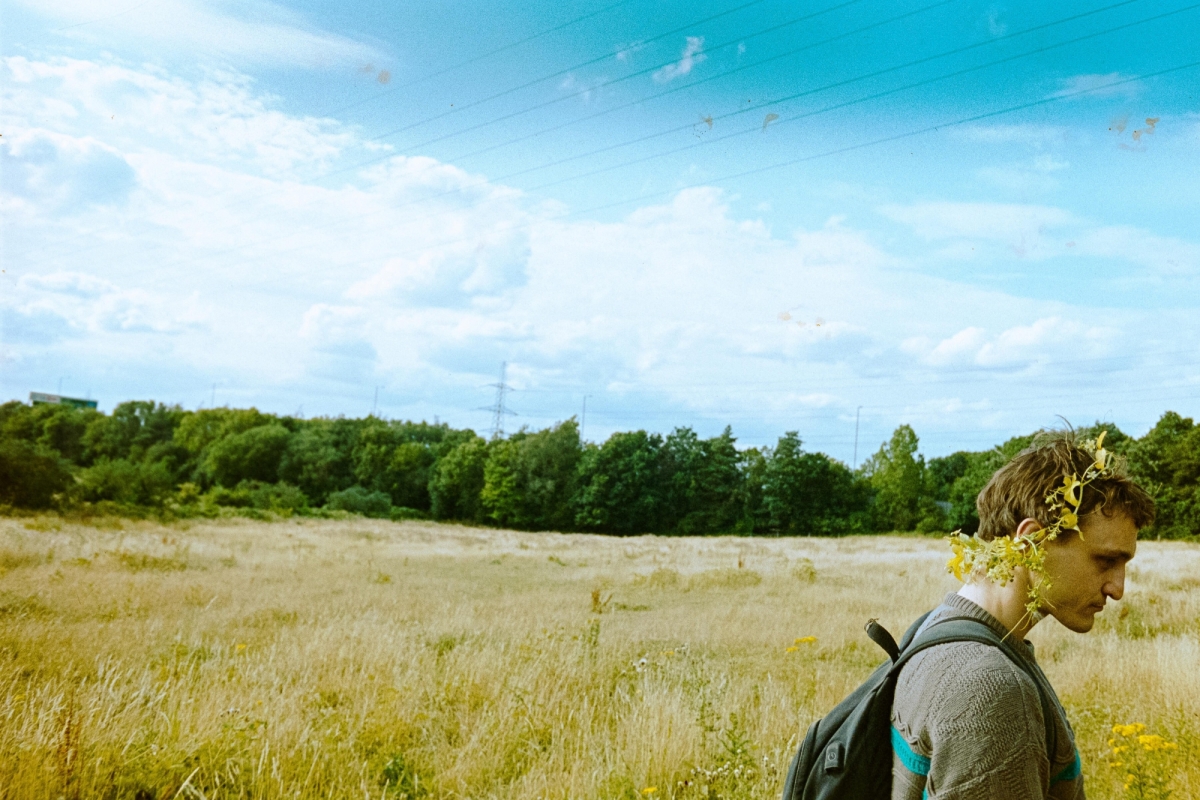
BIRD, directed by Andrea Arnold. © 2024 House Bird Ltd, Ad Vitam, BBC & BFI.
"People are perhaps not used to watching handheld so much these days at the cinema, and some of the more kinetic images might have given the audience a little seasickness, but I love shooing that way. It fitted the service and Andrea liked the results."
He says he also enjoyed shooting the tracking shots of Bailey and Bug riding together on an electric scooter. "We tried shooting them using a tracking vehicle, but that didn't have the authenticity or energy we wanted. So, I rode pillion on the back of a separate scooter and filmed over my driver's shoulder using my Bolex as we scooted alongside. That was a lot of fun and gave the image a certain vitality."
Ryan's camera and lighting team included Olga Abramson as 1st AC/focus puller, Paul Murphy as key grip, and Andy Cole as gaffer.
"It was very small crew and, as everybody was really tuned in to the project, we were a solid and nimble outfit. Neither Andrea nor the cast, especially the youngsters, were ever compromised by having to wait around for long between different takes or set ups."
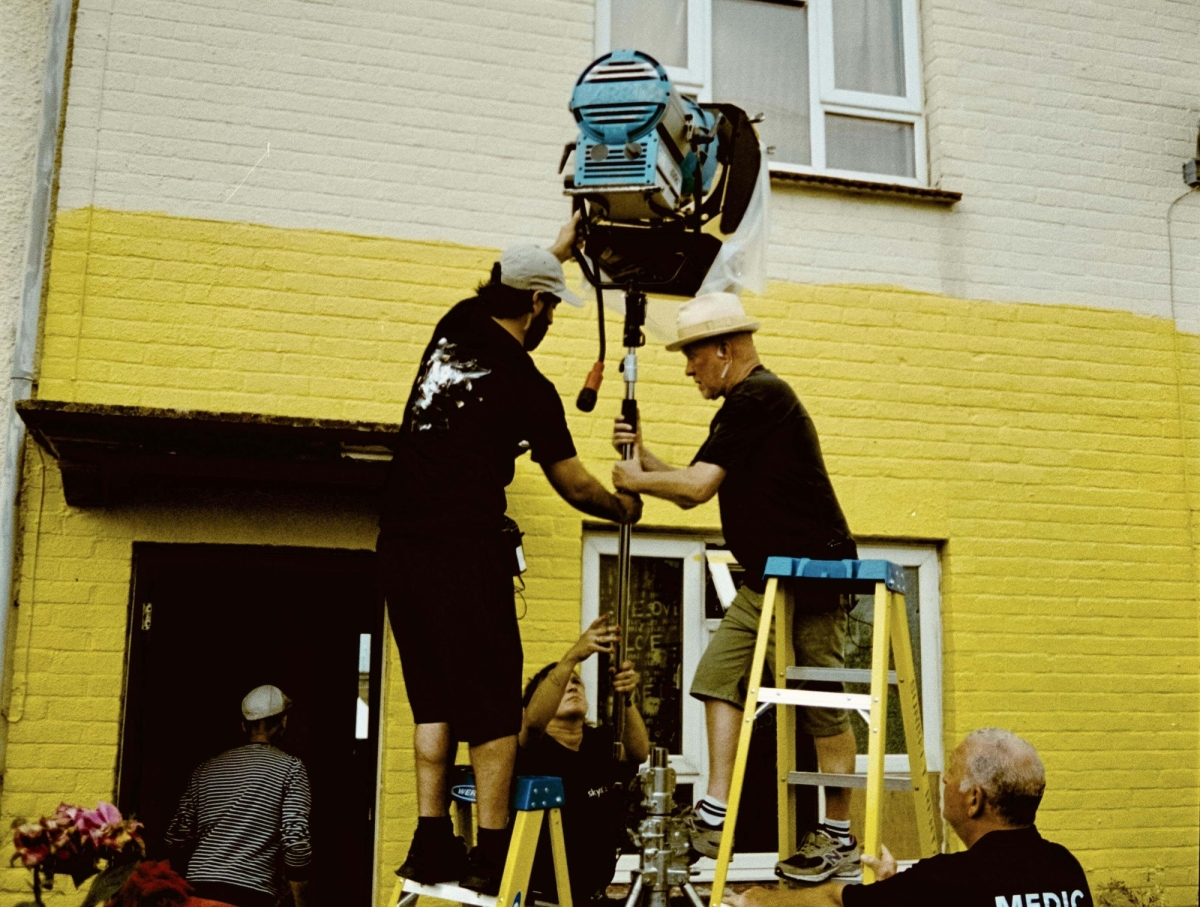
Behind-the-scenes photo by Jima.
Along with handheld, naturalism is also integral to the look of Arnold's canon of work.
"Andrea likes a no-lights aesthetic, so on our day exteriors we pretty much used the available light, with little or no additional illumination going on," Ryan explains,
"The interior of the flat that Bailey lives in was three stories up from street level, and we were able to do some nods to daytime or evening sunlight streaming in through the windows by beaming in a couple of Parcans from the roof of a building opposite. When we had to light those spaces at night, we used a couple of ARRI 6Ks to bring in an appropriate level of illumination from the outside, for exposure and narrative purposes."
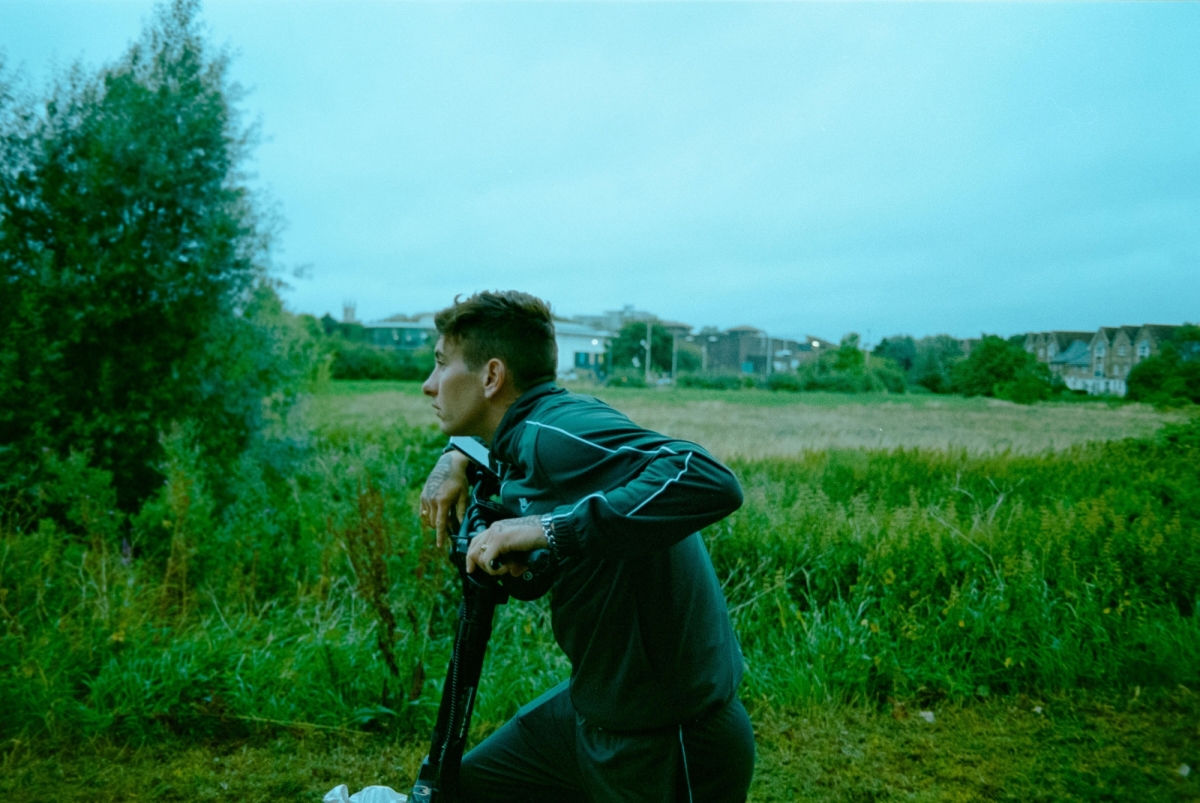
BIRD, directed by Andrea Arnold. © 2024 House Bird Ltd, Ad Vitam, BBC & BFI.
While he enjoys shooting on 16mm film, Ryan says he was impressed at its capabilities when he first saw the movie screened.
"When we watched the film projected on the big screen at the Cannes Film Festival, I could not believe how good the 16mm looked. To me it's impressive and mind-boggling how that could happen from a frame that's about the size of your thumbnail."
He also reflects on two decades of collaborations with Arnold. "I really am blessed to have had the opportunity to work with Andrea for 20 years. Her films are so immersive emotionally and visually, and she has kept the trust that I can find the images inside her head.
"On this film, I love how we came full circle from shooting 16mm in 2003 with Wasp to shooting 16mm in 2023 with Bird. I'm happy to see film is in a good place today, fighting a good fight. 16mm is such a great filmmaking format, and it's still rocking it."